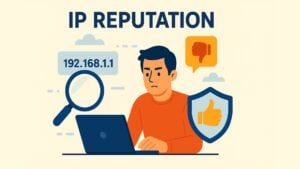
Captcha is a method of verifying human identity when using websites and online services. But what does Captcha stand for? The term Captcha stands for “Completely Automated Public Turing test to tell Computers and Humans Apart.” It is a security mechanism designed to prevent bots from accessing sensitive data and ensure that only real users can interact with online platforms.
Captcha History: Where Did It Come From?
If you’ve ever wondered about the history of Captcha, its origins date back to 1997. Computer scientist Mark D. Lillibridge at Carnegie Mellon University sought a solution to combat spam in online forums. Early Captcha systems, such as distorted text and number recognition, aimed to block automated bots. However, as optical character recognition (OCR) improved, spammers found ways to bypass these security measures. To counter this, Lillibridge introduced an alternative system: “animal species image recognition.” Instead of distorted letters, users had to identify specific animals to verify they were human.
Evolution of Text-Based Captchas
Over time, Captcha history evolved, leading to the rise of text-based Captchas. These required users to type distorted letters and numbers, creating what became known as the Reverse Turing Test—a challenge that computers struggled with, but humans could easily solve.
Advances in Captcha Security
As automated attacks grew more sophisticated, Captcha systems improved. One major advancement was audio-based Captcha, designed for visually impaired users.
In 2009, Google introduced reCaptcha, leveraging human input to help digitize books. Users were presented with scanned words that OCR software couldn’t recognize, and their responses helped convert printed text into digital format.
By 2014, Captcha technology advanced further with No Captcha reCaptcha, requiring only a simple click to confirm human identity. This system used machine learning and behavioral analysis, making it more user-friendly while maintaining security.
In 2009, reCaptcha was introduced, a captcha system developed by Google. This system used the power of humanity to digitize books by presenting users with captchas that consisted of distorted words and phrases that could not be recognized by optical character recognition software. When a user successfully solved the captcha, the word or phrase was converted into text that was used to digitize books.
In 2014, Google developed a new captcha system called “No Captcha reCaptcha” that requires only a simple click or touch from the user to prove they are human. This system uses advanced technologies like machine learning and user behavior analysis to detect whether the user is actually a human or not.
Captcha Meaning and Future Innovations
The meaning of Captcha has remained the same: distinguishing humans from bots. However, as AI evolves, future Captcha systems will likely rely on more advanced verification methods, such as biometric authentication and behavioral tracking. Want to learn more? Read our article on the future of Captcha: How will Captchas of the future work? Our advanced Captcha solution combines the latest security technologies with a seamless user experience—no frustrating puzzles, just effective bot protection. Learn more about implementing the best Captcha for your needs here: Why Captcha?




